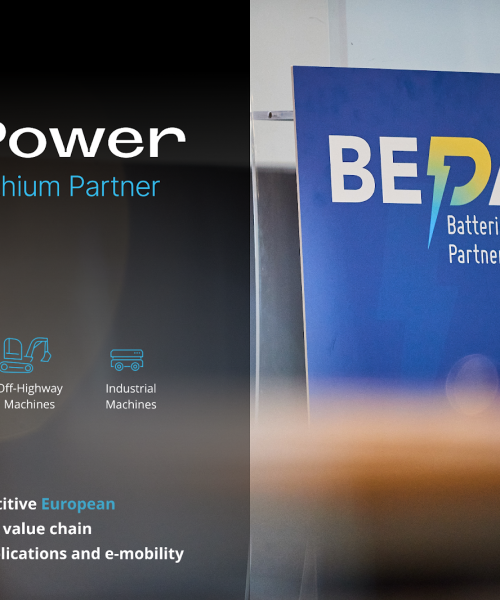When talking about lithium batteries, the abbreviation BMS (Battery Management System) often goes hand in hand with it. Despite its importance, many people are unaware of its function and meaning. In this article we will explain what the BMS is in lithium batteries and what its function is in cell balancing.
What is a lithium battery BMS?
The importance of this system in cell balancing
Although lithium batteries offer many advantages compared to conventional batteries, they are not as traditional batteries Despite their high efficiency, they also have a weakness. What is it? The difficulty of balancing the cells and ensuring uniformity of energy production from one cell to another.
This can make a difference in three respects:
- Rated capacity
- Internal resistance
- Auto-download
Over time or through use, these differences can unbalance the cells within the battery, resulting in a discrepancy of between 3% and 6% depending on the usage conditions and charge/use cycles of the lithium battery.
When a lithium battery becomes unbalanced, it means that its component cells do not have the same charge or state of charge. This can cause some cells to discharge faster than others, which can reduce the overall capacity of the battery, decrease its performance and shorten its life. Without a proper cell balancing system, the difference between the cells can grow larger and larger, gradually depleting the available charge capacity, causing damage to the battery or even causing hazardous situations such as fire or explosion, especially if the battery is subjected to heavy charging and discharging. It is therefore important to have a proper balancing system that keeps the battery balanced and in good condition to ensure efficiency and safety.

Because the cells within a lithium battery are connected in series, they all charge and discharge at the same energy level. However, if a proper cell balancing system is not in place, the differences between the cells may increase over time, which will gradually decrease the overall capacity of the battery. Therefore, The first function of a BMS in a lithium-ion battery is to the balance of cells.
Lithium-ion batteries: BMS and cell balancing
How does a conventional BMS affect the balance?
A common BMS solves the imbalance by applying resistance to the cells with a higher load, until the weaker cells reach the same level.
Let's look at the pros and cons of using this technology:
PROS
- The use of common BMS is cost-effective: thanks to its simple architecture, it helps to keep the cost of electronics low.
CONS
- Extremely slow during equilibrium.
The balancing process with a conventional system is extremely slow due to the low applied current (usually between 0.1 A and 1 A), which means a balancing time of 6 to 12 hours. For example, on a 400 Ah battery, after having used 300 Ah, a 100 A battery charger would take 3 hours to restore power, but it would take an additional 6 to 12 hours to balance it. This results in a total charging time of 9 to 15 hours.
- Gradual reduction of available energy
Continued use of the battery before the balancing process is complete can gradually increase the difference between the most highly charged cell and the least highly charged cell, which decreases the nominal capacity of the pack. This can lead to a decrease in the performance of vehicles with such lithium batteries, as the lower-charged cell limits the discharge and the higher-charged cell limits the charge.
- High maintenance costs
Maintenance of batteries with conventional BMS can be costly as individual elements cannot be replaced on site, often resulting in the need to send the battery back to the manufacturer, which entails high shipping costs.
How does NCPOWER's patent pending balancing system work?
We will start by explaining the difference between active and passive balancing, two different techniques for balancing the cells of a lithium-ion battery.
Passive balancing occurs naturally when a battery is connected in series. Cells with a higher charge transfer excess energy to cells with a lower charge until all cells are balanced. This process is slow and can take a long time.

Active balancing, on the other hand, is achieved through the use of electronic circuits that monitor the voltage of each cell and transfer energy from the cells with the highest load to the cells with the lowest load, achieving balance more quickly.
Active balancing is more effective and faster than passive balancing and is used in more advanced battery management systems.

Our battery balancing system, called NCPOWER Systemis different from a traditional BMS in that it has the ability to balance each cell individually through combined active and passive balancing, using at least 20 times more current.

Figure 1: Cellular imbalance and cellular equilibrium
PROS
- Active and passive high power balancing (20A)
- Short charging time and predictable (equilibrium time of less than 25 minutes)
- Active support for weaker cells during discharge
- Full temperature controlwith 2 sensors in each cell (50 sensors in a 80V battery)
CONS
- Applicable only for batteries of 5kWh and above, because the electronics are more expensive in this case.
Other functions of a BMS in lithium batteries
So far we have been able to see the main function of a BMS, the crucial role it plays and the difference between conventional and NCPOWER BMS.
However, there are even more functions performed by this type of system that are key to lithium batteries. You can read more about them here.






